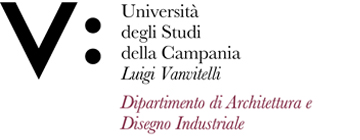Giorgio FRUNZIO
Insegnamento di SCIENZA DELLE COSTRUZIONI
Corso di laurea magistrale a ciclo unico in ARCHITETTURA
SSD: ICAR/08
CFU: 6,00
ORE PER UNITÀ DIDATTICA: 48,00
Periodo di Erogazione: Secondo Quadrimestre
Italiano
| Lingua di insegnamento | ITALIANO |
| Contenuti | I contenuti del corso si possono sintetizzare in pochi elementi: sistemi di travi, calcolo degli spostamenti nelle travi, soluzione di strutture iperstatiche, analisi degli stati deformativi e tensionali sia nelle travi che in generale nel corpo deformabile, verifiche delle strutture: verifiche di resistenza di sezioni delle travi, problemi semplici di stabilità |
| Testi di riferimento | Il panorama librario propone numerosi testi per lo studio della Scienza delle Costruzioni, tutti in genere di buona qualità e tutti, relativamente agli argomenti svolti completi. L'allievo potrà approfondire lo studio affiancando più testi anche per andare oltre la singola convenzione allo spirito della materia. |
| Obiettivi formativi | Il Corso di Scienza delle Costruzioni, nell'ambito della formazione dell'Architetto, costituisce un passaggio fondamentale in cui l'allievo deve essere portato a: acquisire un metodo per l'identificazione delle strutture e per la loro soluzione che possa essere utilizzabile in tutti i processi di natura tecnica ai quali sarà chiamato nelle possibili attività professionali essere informato delle problematiche strutturali che esistono nell'ambito delle costruzioni per poter inserire al meglio le informazioni acquisite nell'ambito dei progetti dell'architettura essere competente nei metodi per la soluzione delle strutture isostatiche ed iperstatiche, nonché per la verifica dell'efficienza delle strutture stesse sia in termini di resistenza che in termini di funzionalità e quindi di deformabilità della struttura stessa. |
| Prerequisiti | L'allievo che vuole avvicinarsi proficuamente al corso di Scienza delle costruzioni deve avere le nozioni che sono proprie del corso propedeutico di Statica, anche per quanto riguarda la conoscenza specifica della Geometria delle Aree, avere una buona capacità a trattare con funzioni proprie dell'Analisi Matematica quali le derivate e gli integrali, nonché nozioni di Geometria Analitica e descrittiva come le operazioni su matrici e la rappresentazione grafica di funzioni nel piano e nello spazio. |
| Metodologie didattiche | Lezioni frontali ed esercitazioni in aula cercando l'interazione con gli allievi. |
| Metodi di valutazione | Prova orale a partire dalla discussione degli esercizi svolti durante l'anno e poi trattando gli argomenti teorici di base. |
| Altre informazioni | Al termine del corso è possibile richiedere esercitazioni relative all'applicazione di programmi di calcolo didattici e commerciali a scopo di verifica di quanto imparato nel corso nonché per illustrare le problematiche che l'uso di software possono determinare. |
| Programma del corso | I contenuti del corso si possono sintetizzare in pochi elementi: sistemi di travi: calcolo degli spostamenti nelle travi soluzione di strutture iperstatiche analisi degli stati deformativi e tensionali sia nelle travi che in generale nel corpo deformabile verifiche delle strutture, in particolare verifiche di resistenza di sezioni delle travi problemi semplici di stabilità |
English
| Teaching language | Italian |
| Contents | The contents of the course can be summarized in a few elements: beam systems, calculation of beam displacement, solution of hyperstatic structures, analysis of deformation and tension states both in beams and in general in the deformable body, verification of structures: resistance checks of sections of the beams, simple problems of stability |
| Textbook and course materials | The library panorama offers numerous texts for the study of the Science of Construction, all generally of good quality and all, relative to the topics covered, complete. The student will be able to deepen the study by combining several texts also to go beyond the single convention to the spirit of the subject. |
| Course objectives | The Science of Construction course, within the Architect's training, constitutes a fundamental step in which the student must be led to: acquire a method for the identification of the structures and for their solution that can be used in all the processes of a technical nature to which he will be called upon in the possible professional activities to be informed of the structural problems that exist in the construction sector in order to be able to best insert the information acquired in the context of architectural projects to be competent in the methods for solving the structures isostatic and hyperstatic, as well as for verifying the efficiency of the structures themselves both in terms of resistance and in terms of functionality and therefore of the deformability of the structure itself. |
| Prerequisites | The student who wants to profitably approach the course of Construction Science must have the notions that are typical of the preparatory course of Statics, also as regards the specific knowledge of the Geometry of Areas, have a good ability to deal with the functions of the Analysis Mathematics such as derivatives and integrals, as well as notions of analytical and descriptive geometry such as operations on matrices and the graphing of functions in the plane and in space. |
| Teaching methods | Lectures and classroom exercises looking for interaction with the students. |
| Evaluation methods | Oral test starting from the discussion of the exercises carried out during the year and then dealing with the basic theoretical topics. |
| Other information | Lectures and classroom exercises looking for interaction with the students. |
| Course Syllabus | The contents of the course can be summarized in a few elements: beam systems: calculation of the displacements in the beams solution of hyperstatic structures analysis of the deformation and tension states both in the beams and in general in the deformable body checks of the structures, in particular checks of section resistance of the beams simple problems of stability |








